Project Demo Video
Authors:
Debprasad Mandal
Navjot Saran
Harprabh Gill
Fysal Beauferris
Project Description
The project we chose to take on is Virtual Therapy. In this virtual app individual’s can talk to their therapist virtually. In order to do this they will need to join a room by first choosing a setting, and then send the room id to the therapist so that they can join. Once they do this the room will load in with the environment chosen and both users will be in the room itself. From there, voice proximity chat will be enabled once the users give permission to allow the program to access their microphone. Now, both the user and the therapist are free to talk and look around their surroundings in the comfort of their own home while also remaining anonymous.How we came up with it and why we chose it
We initially started by coming up with 10 ideas among ourselves and drawing our own implementations of it. After discussing amongst ourselves we came up with this idea while talking about activities you do with others that you may want to do from your home. With virtual therapy being a way for 2 people to communicate and collaborate online, we decided to go with it. It also meant that we were adding a whole new element to therapy as not only will you be able to do it from where you want to, but you will also be able to be more comfortable knowing you can be anonymous and the therapist can’t actually see you. While that is how we came up with the main idea for the program, we decided to add multiple settings from which the user can choose so that they can be even more comfortable by choosing a setting of their liking.
Initial Sketches
In order to decide how we can make users communicate and collaborate with each other we each had initially come up with 10 designs each. The ideas I came up with were an interview prep, vr meeting space, vr sports, charades, vr home designer, sports form help, music charades, vr cooking, vr therapy, and vr jenga. Out of all the ideas we came up with we eventually decided to go with the virtual therapy idea as it is an innovative way for individuals to talk to therapists while remaining in the comfort of their own home. This also allows users to remain anonymous so that they’re able to talk without worrying about people judging them.
Initial Sketch #1
This sketch demonstates the idea of having a virtual environment to demonstate model designs to individuals that are unable to meet in person for a presentation. This would be implemented in VR to be able to demonstate architectural or product design with a 1-to-1 scale to the surroundinng virtual environment. Alternatively, if a physical model is too hard to transport you could create a AR version where you could show investors or clients a design without having to bring the physical version around.
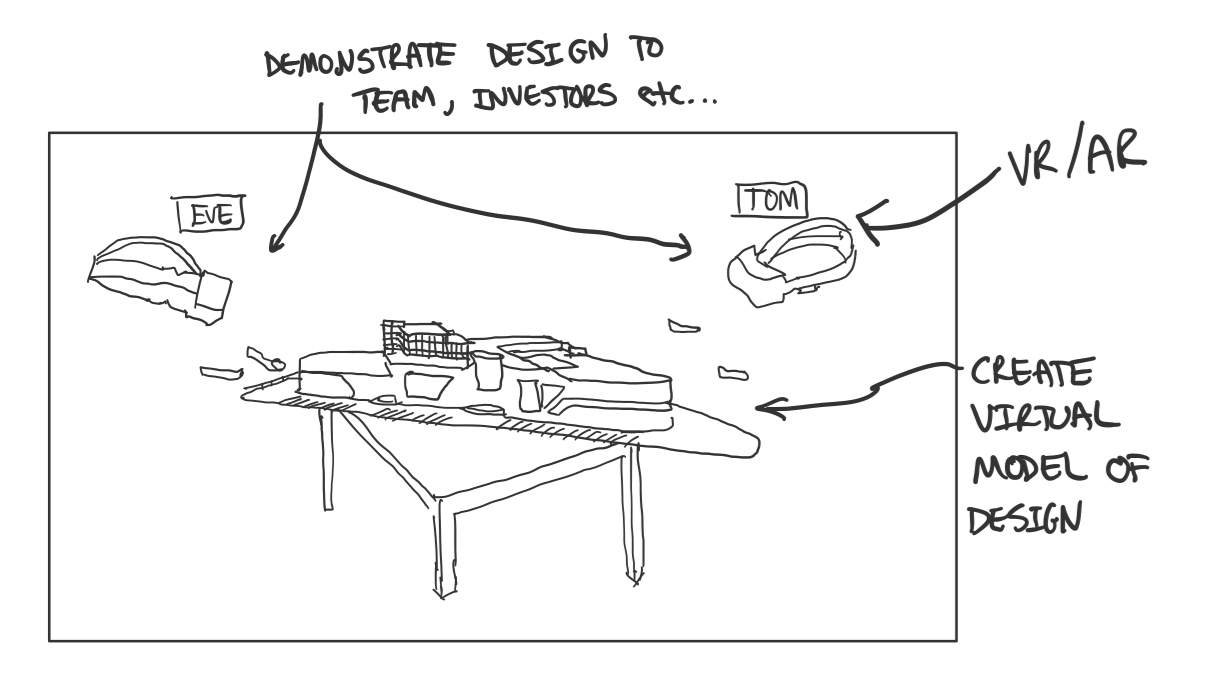
Initial Sketch #2
This sketch demonstates the concept of doing interior design without having to have the furniture displayed in an actual phyisical space. This could be a solution for individuals who are making design decisions for a project but are located far away and cant be there for the design decisions. This project would work by allowing for a company to create a 1-to-1 scale recreation of the space with the desired interior design and furnishings and the client could get a better idea on how the space works with the design. If unhappy with a decision they would be able to easily move furnishings around or indicate areas that need to be modified.

Initial Sketch #3
This sketch conceptualizes the idea of having a virtual listening party with your friends or even with strangers! Connect online, listen to new music drops or classics with others. React with emojis or talk via your microphone. Change the listening party scene depending on your mood.
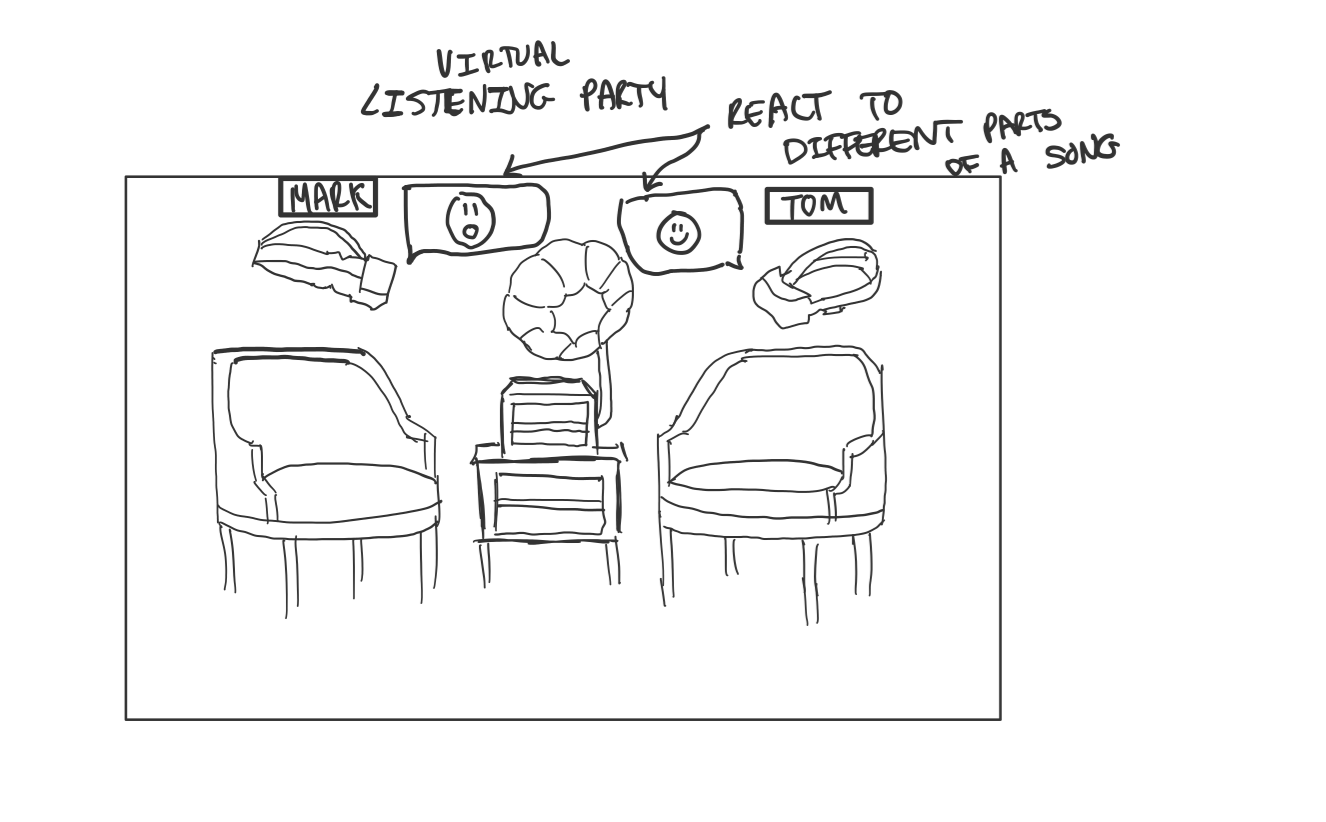
Initial Sketch #4
This sketch demonstates the idea that we ended up deciding to implement for our project. The idea is creating a virtual space for users to have anonymous therapy sessions with a licensed therapist. Virtual environment can be choose from a variety of options, from a traditional office space to a beach!
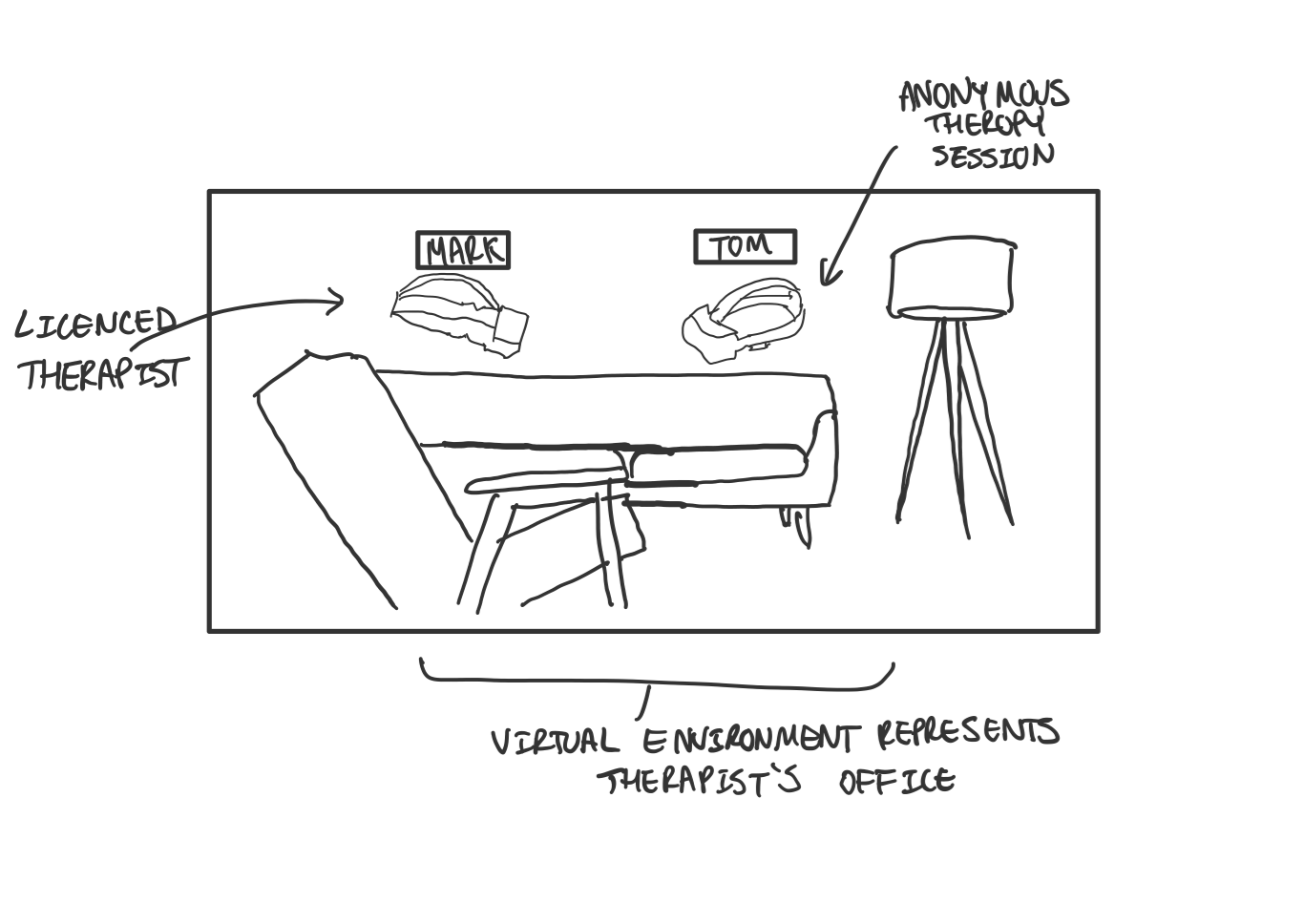
Initial Sketch #5
This sketch displays the idea of creating a virtual escape room. Just like a escape room in the physical world, you would have a fixed amount of time to figure out how to get out of the room. Find clues and solve puzzles with friends to get out of the room as quickly as possible!
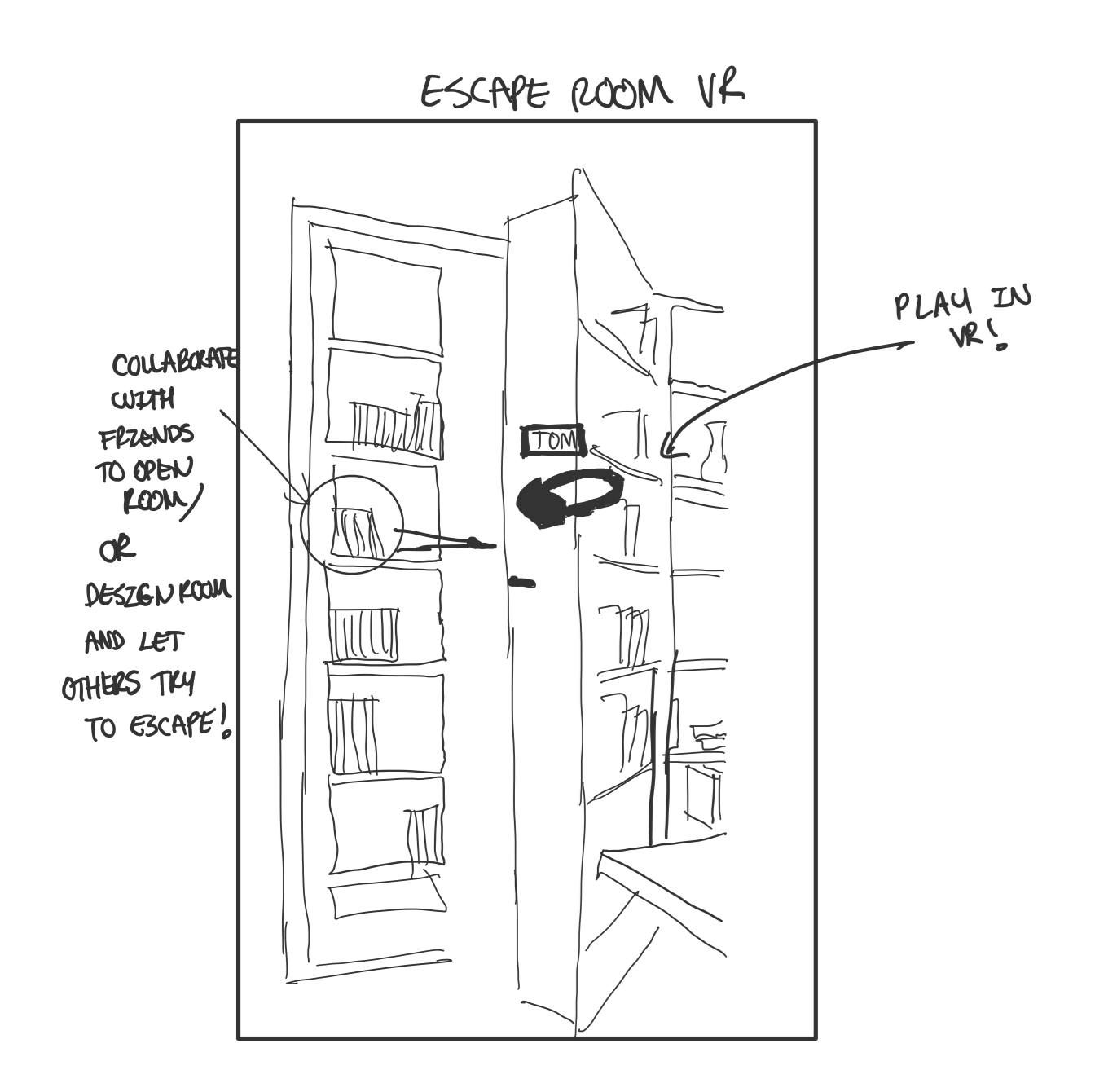
Initial Sketch #6
This sketch demonstates the idea of having a AR translator, talk to strangers in your language of choice and have your audio processed by their microphone and then translated to their desired language. This translated text would appear in AR as a speech text bubble.
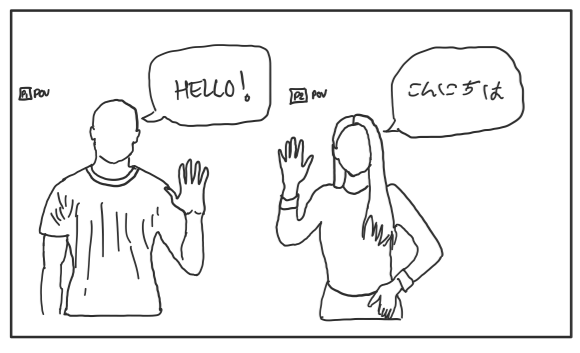
Initial Sketch #7
This sketch demonstates the idea of creating a virtual game of Jenga, with proper physics when moving pieces in the Jenga tower. You would be able to move pieces in VR with other players in real time. If the tower falls, you are out!
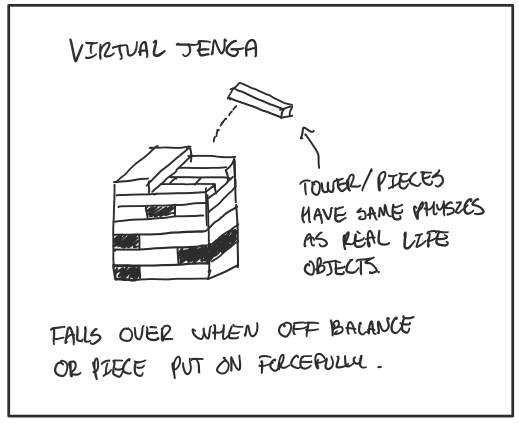
Initial Sketch #8
This sketch shows a design for creating an AR grocery list, where each grocery item can be given a custom shape in the AR space. You would choose the area of your house/environment to display the list in AR. Combinations of words ans shapes representing the items requested by different family members. On grocery day you would screenshot the list and use it as you shop!
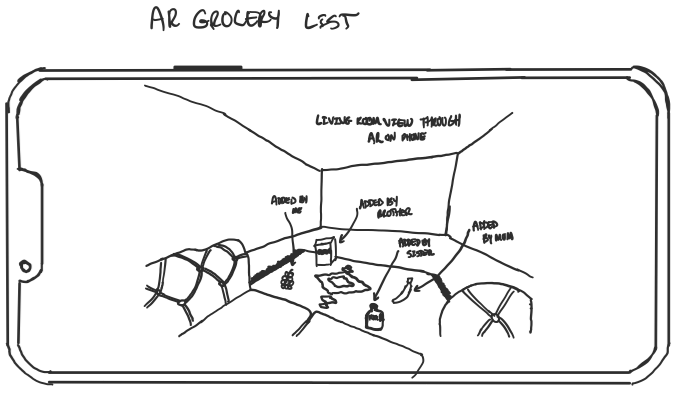
Initial Sketch #9
This sketch shows a design for an AR easter egg hunt style minigame. In this game, one player would set a location for a hidden object aswell as hints to finding it (in AR) and the rest of the players would use the hints to locate the hidden object. First one to find the hidden items win!
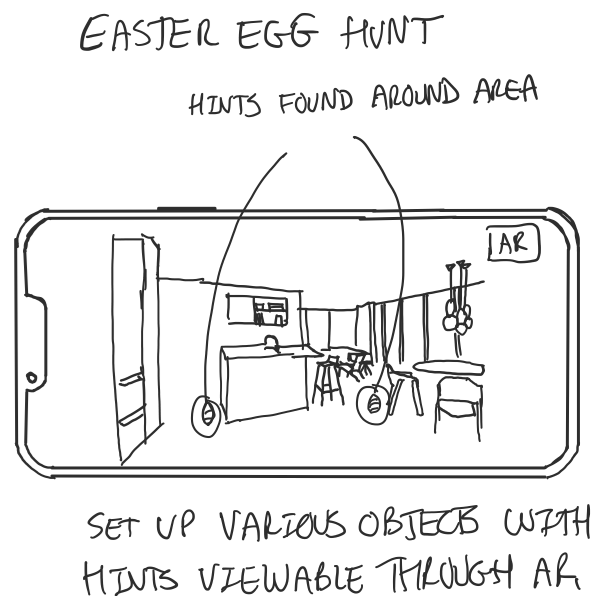
Initial Sketch #10
This final initial sketch shows off a concept for a drawing guessing game. In this game, you would send drawings back and forth between players and guess what the other players sketch is suppose to be. This would be in AR and the other person would be able to view your sketch in AR.
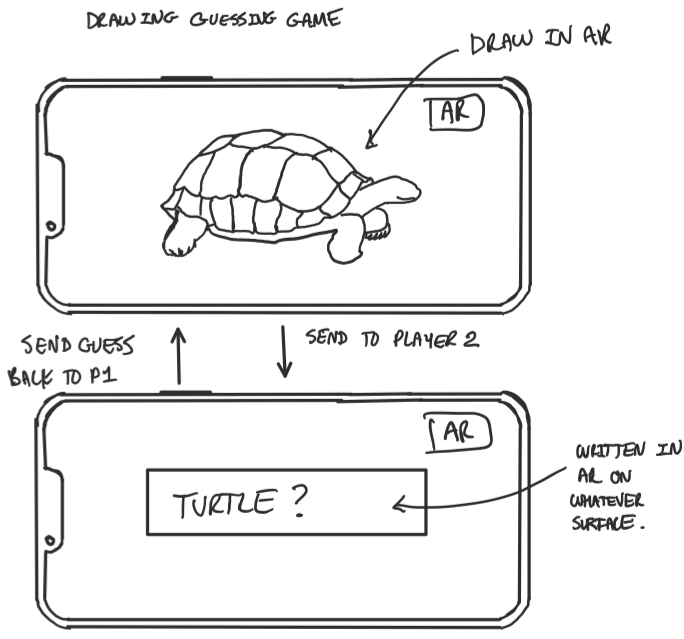
Detailed Sketches
As we shifted our focus to VR Therapy, we came up with 10 detailed sketches to develop the idea. Since part of the theme was supposed to be communication, we instantly started thinking about the appearances of patients and therapists during the session. We decided to go with the simple blue spheres with eyeballs since they are easy to see from far away and work well for anonymity. It’s a pretty cool project so we were excited to make our own scene each for patients to select from for their VR Therapy experience. These scenes include: Forest, Winter, Office and Beach.
Detailed Sketch #1
Upon discussion we had to figure out a simple and clear way for users to pick their desired therapy setting. After discussing different implementations we ultimately decided that a simple main menu screen in which the user can visibly see a snapshot of the various settings to pick from seemed most appropriate.

Detailed Sketch #2
As mentioned previously, we had to consider that there would be a vast variety of individuals seeking therapy with different “Happy Places”. While some people need privacy to feel comfortable to express themselves, some people are the complete opposite. For some people an office isn't somewhere they feel happy at, maybe they have worked a full time office job for years and that is the source of their stress and anxiety and they just want to get away from that. Since we already created a winter theme and a vegetation heavy forest environment we thought that for our fourth and final setting what better than to have a beach scene! What better place to kick back, relax and get a tan, throw a volleyball or build a sandcastle. This sketch depicts this potential beach environment with a palm tree and bench to relax on.
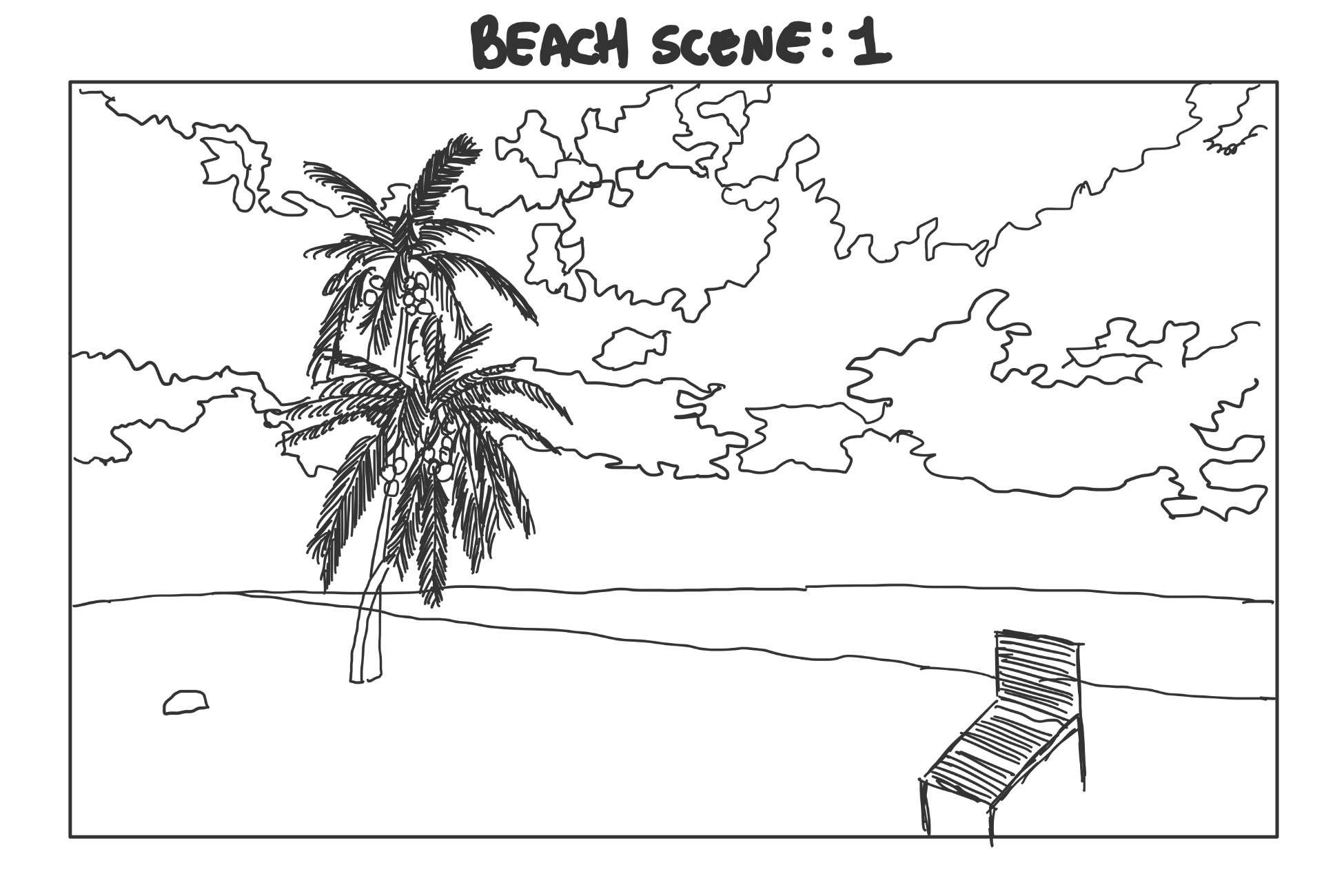
Detailed Sketch #3
This sketch depicts an alternative perspective of the beach, showing how the beach would look from a different angle. This sketch serves to present the vastness of the beach, as a small beach might feel claustrophobic.
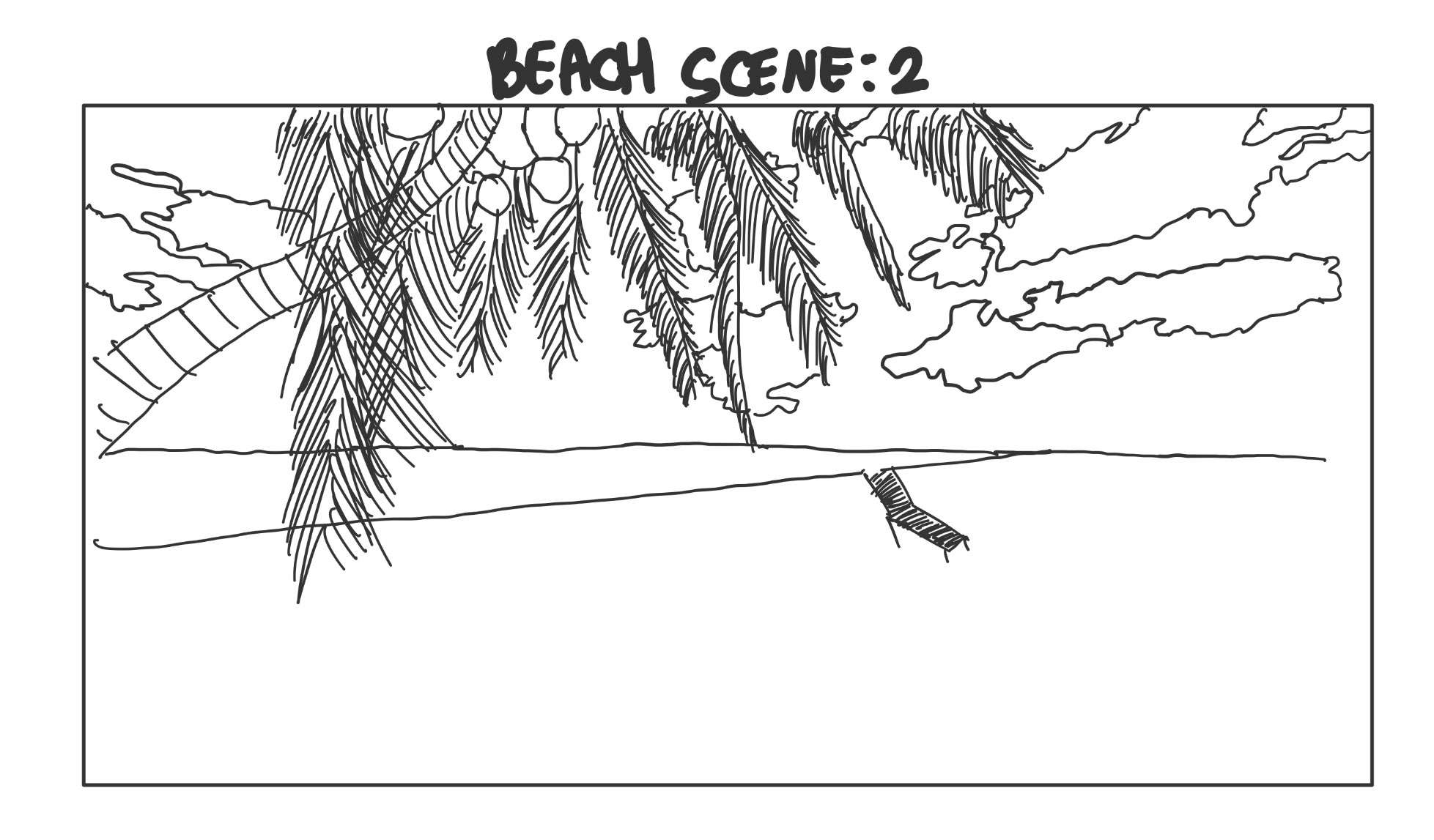
Detailed Sketch #4
We acknowledged that we needed to create settings that would be distinct and unique from each other and that for some people, their happy place is a bleak and quiet setting. We believed it could be represented by a rural winter scene. This scene is vast and empty, there's no life and civilization for kilometers and this is the ultimate form of privacy that could allow some people the opportunity to express themselves in a way that they wouldn't do otherwise. This sketch is from the potential perspective of either the therapist or the person seeking therapy. There is the option to move around the snow, stare off into the blank winter or sit on the bench.
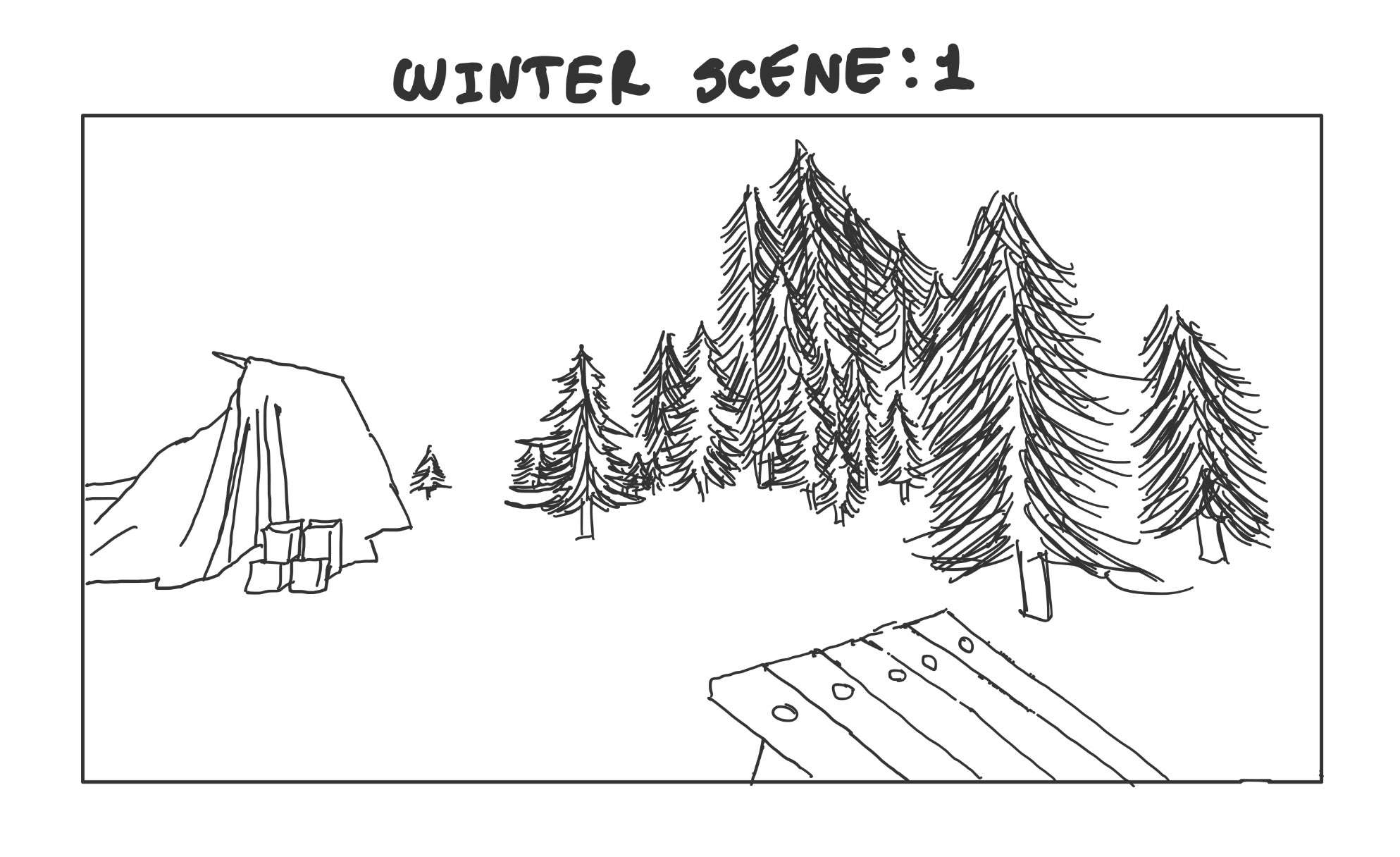
Detailed Sketch #5
This is an alternative perspective of the winter setting, specifically drawn to emphasize the potential bleak and vast scene we are trying to create for the client.
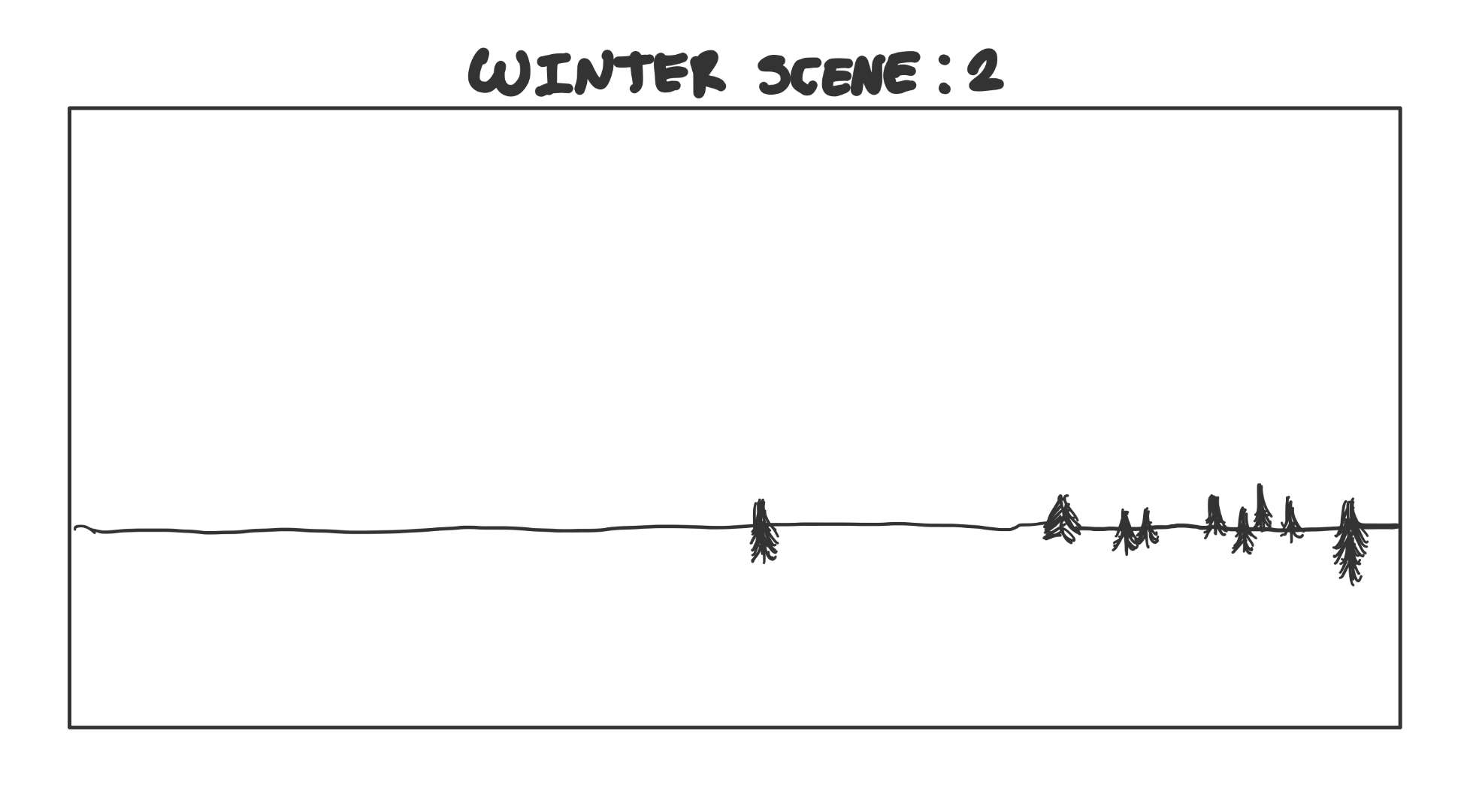
Detailed Sketch #6
Although the beauty of virtual reality is the ability to create environments either imaginary or impractical to create/reach, we do understand that there is already a large population of people that have already participated in traditional therapy. This traditional therapy usually takes place in an office environment, and since this is a common place for therapy, this could be the safe space needed for a large majority of users to feel comfortable enough to talk things out. Therefore, we had to include a traditional office environment. This sketch depicts a traditional office, stylized in vintage furniture.The sketch shows the perspective of the person giving therapy sitting on a leather chair, facing towards a couch where the client would sit.
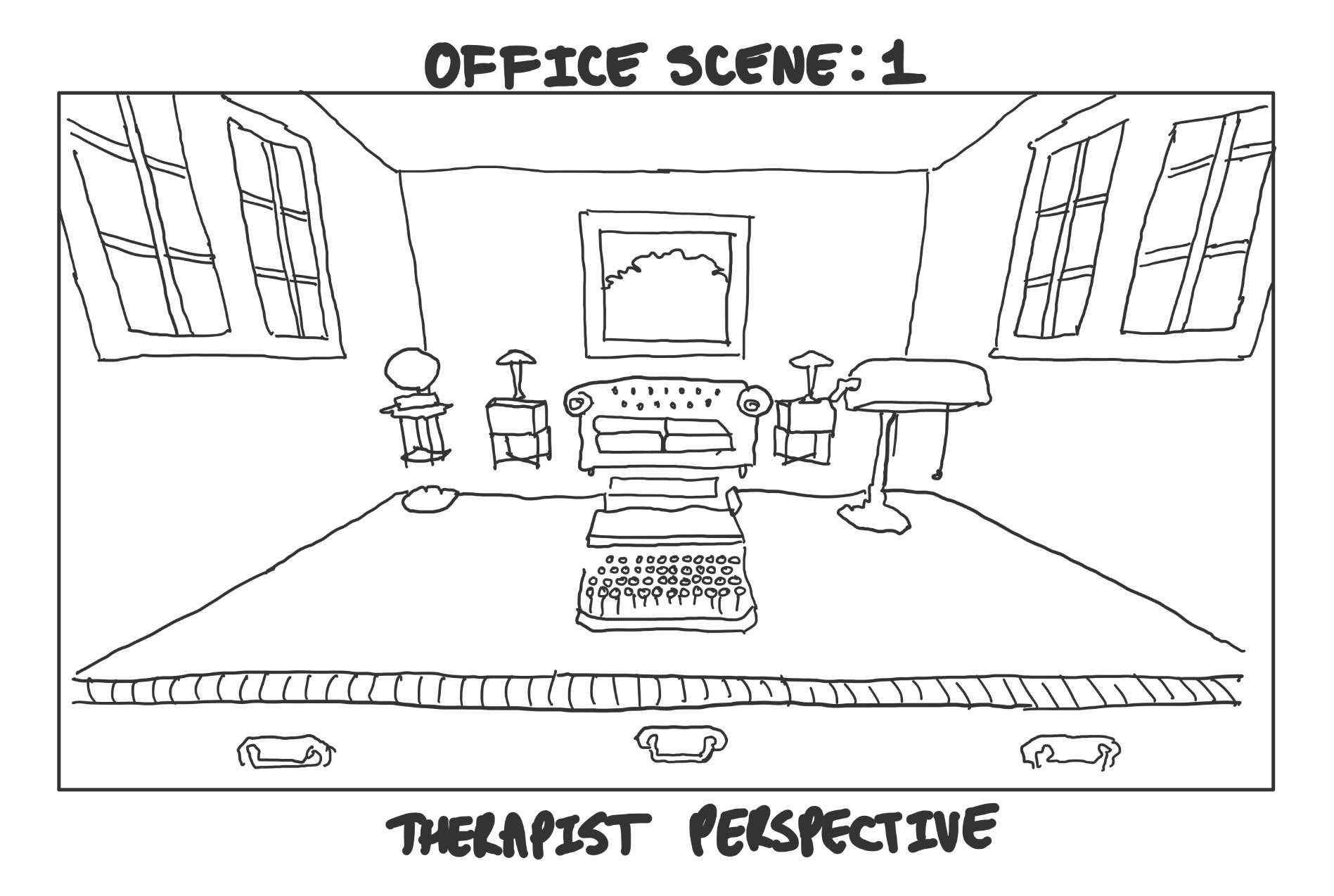
Detailed Sketch #7
This sketch depicts an alternative perspective of the person who is seeking therapy sitting on the leather sofa, facing the therapist, surrounded by various items which would be in a typical office.
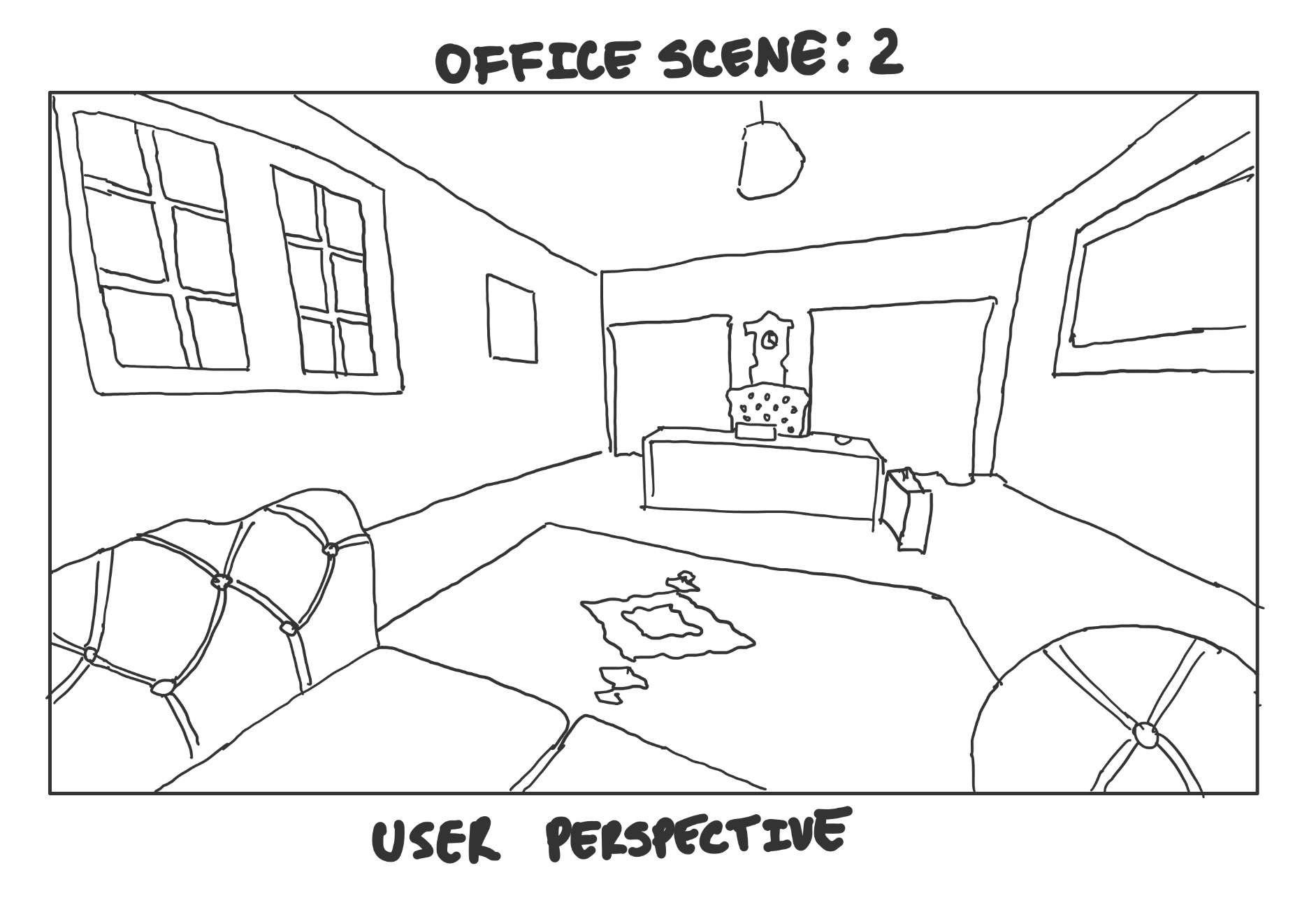
Detailed Sketch #8
One of the settings we wanted to create was a forest scene. Within our forest environment we wanted to create a scene representing a campsite as we believed that it's common for people to go camping to relax and get away from the hustle and bustle of city life! We added an animated dog because who doesn't love dogs? Aswell as deers eating in the background because what's cuter than that. This sketch depicts the possible perspective of the person who is seeking therapy sitting on the bench surrounded by the forest environment.
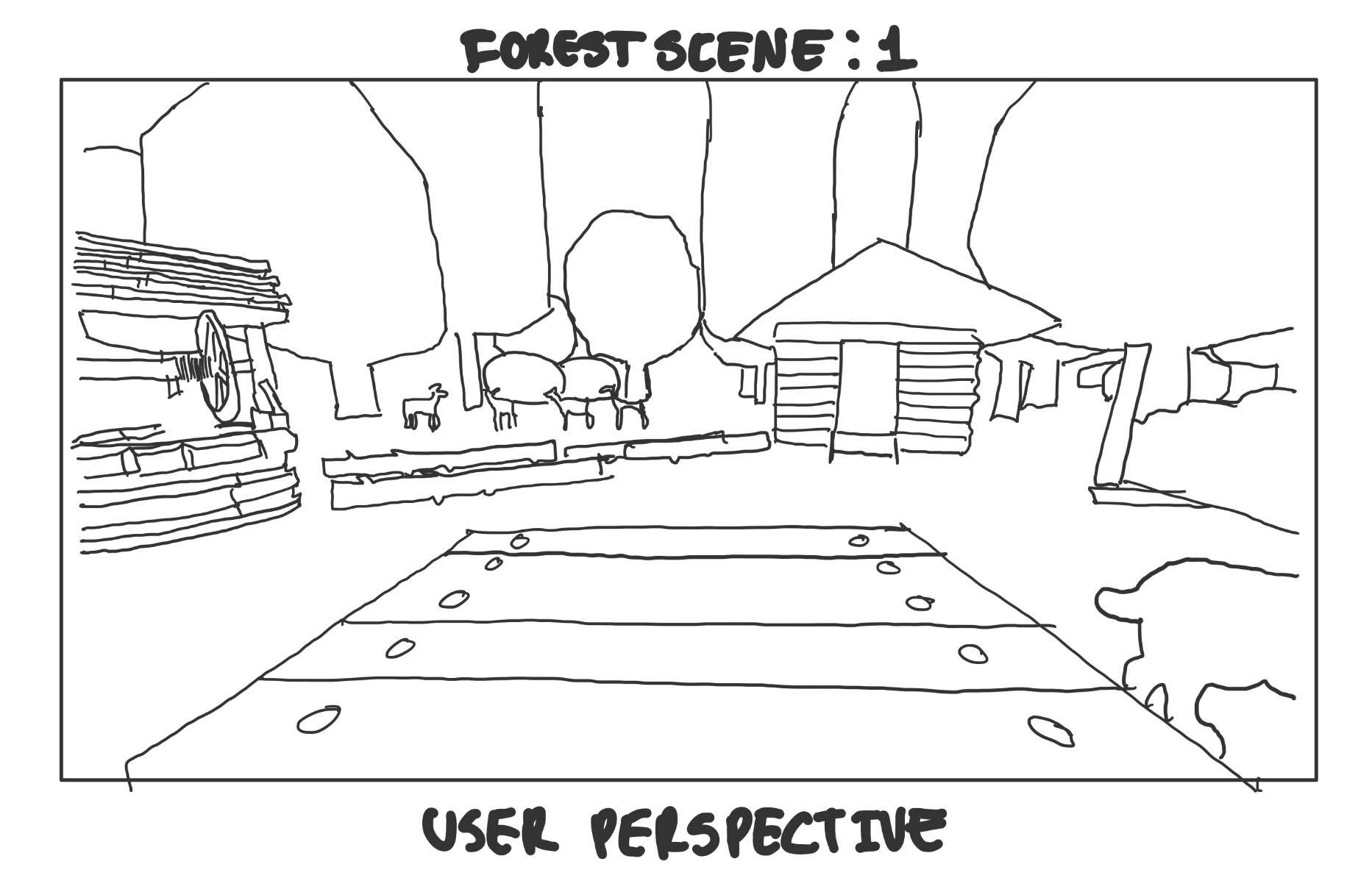
Detailed Sketch #9
This is a sketch of the potential opposite perspective of the person giving therapy sitting on the bench surrounded by the forest environment.
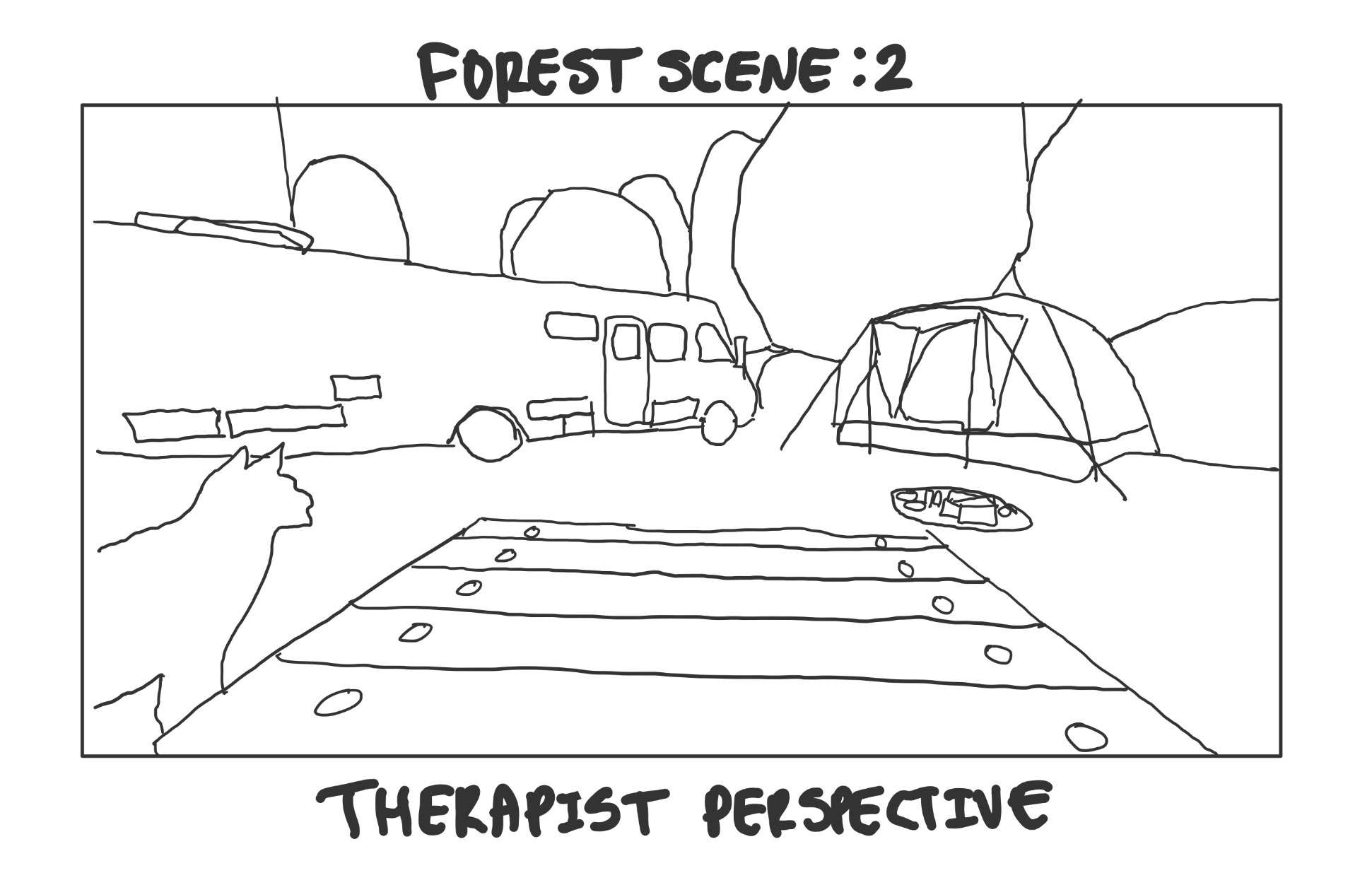
Detailed Sketch #10
After implementing multiple users entering the therapy scene, we had to make one of the most important decisions as to how to represent the user/therapist. We narrowed the options down to three options. The first option was to include floating headsets that would be positioned at the same height as the camera view of the character. However, we ultimately decided against this option as after implementing it, the headsets were somewhat difficult to see, especially on levels/portions of the various scenes with darker lighting. The second option we discussed was a full character/avatar model that could be customized by the users entering a scene. Again, we ultimately decided against this design as programming non-static models that would move their legs/hands was deemed “out-of-scope” as it would require substantial time and resources to create. The final option which we opted to use was a head model that would also be positioned at eye-level of the user's in-scene camera perspective. This option seemed the best as the head model was clearly visible whilst remaining reasonable to implement.
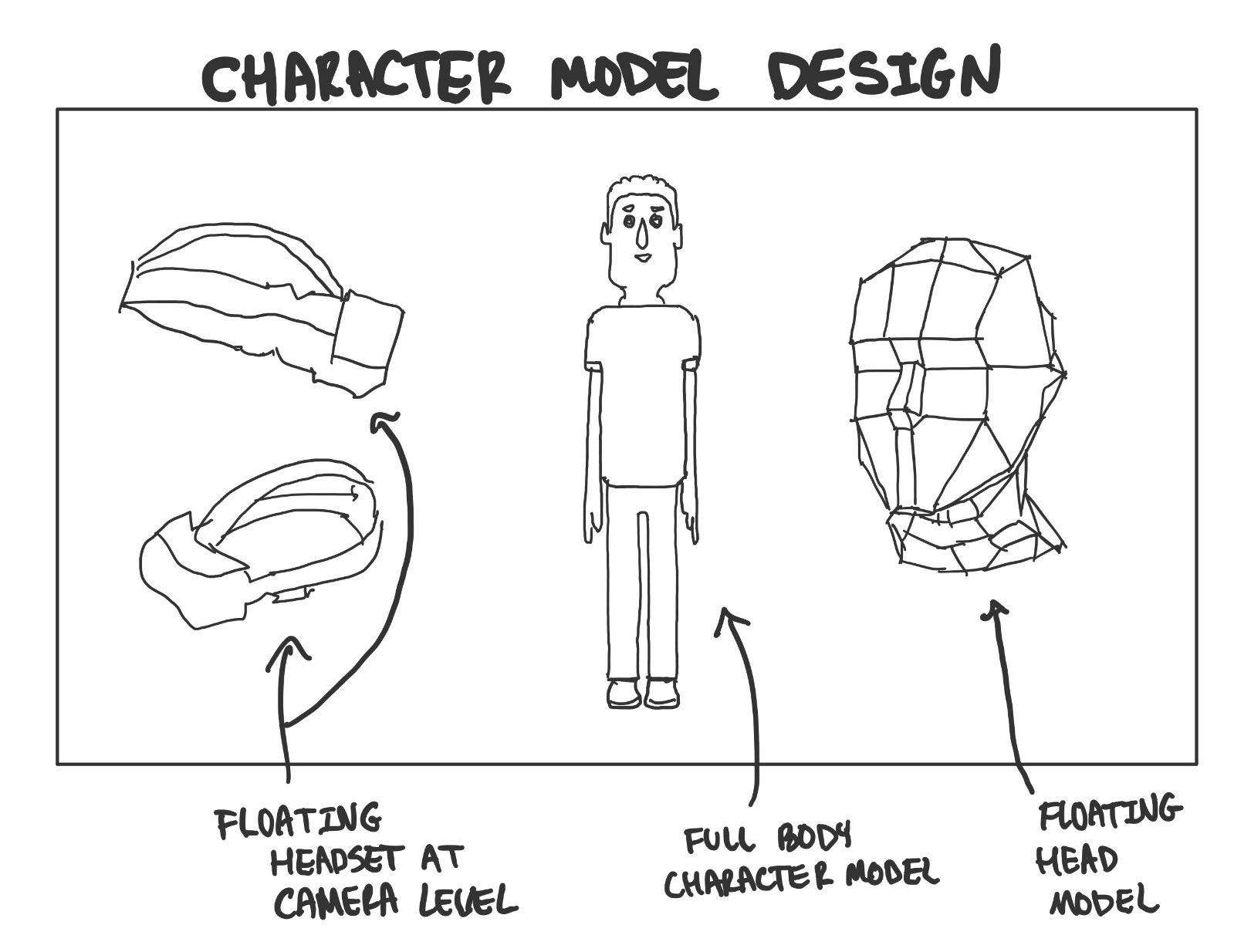
Contribution
After discussing our initial sketches we ultimately decided to go with my idea to create a VR therapy environment. I advocated to the team how we would accomplish this project with our current tools of a-frame and networking learned in class and initially got the team organized with set deadlines and tasks for every individual. Afterwards i completed the therapist office setting aswell as created all 10 detailed sketches and associated writeups.
Limitations and Issues
Since anyone with the link can access the session, this isn’t really secure. Multiple people being able to join at any given time adds to this limitation, because therapy is personal and the session is meant to be anonymous. The session otherwise works well, allowing the user to pick an environment of their choosing and meet up with, ideally, a therapist. Another issue we had was with the complexity of our VR environments as we started adding more models. We quickly learned that adding complex models with too many triangles and vertices makes the session lag. This limited us in our ability to add many more models and/or nicer models too large/complex for our computers to run smoothly. An example of this is the forest environments animations that stopped working after we integrated newer server communication code. We also have a minor issue where the user is able to travel off map and through walls. We didn't end up with enough time to deal with this issue but it's okay because it doesn’t have a significant impact on the apps function. The last limitation I’ll discuss is our inexperience with A-Frame. It was fun and cool to learn, but without a good understanding of common practices and conventions, we made lots of time consuming mistakes during development. It was all-in-all a great learning experience.